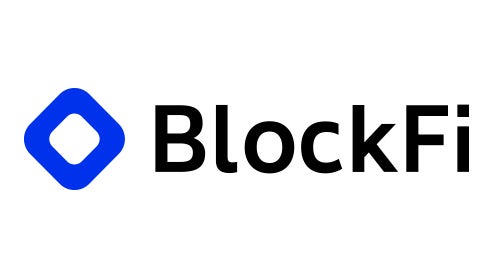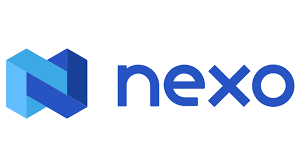Want to jump straight to the answer? BlockFi is our favorite crypto savings account to earn over 8% annual interest on your crypto!
Thanks to the efficiencies of blockchain technology and lending markets, cryptocurrency users are able to earn high interest rates on their digital assets. And, thanks to platforms like BlockFi, Celsius and Crypto.com, it’s easier than ever to earn passive income from your cryptocurrencies. Even if you’re a risk-averse investor, you can earn high yields on stablecoins: digital assets pegged to the U.S dollar.
A cryptocurrency savings account gives you access to the cryptocurrency market while allowing you to earn much higher interest rates than a bank account. However, there may be more risks involved in earning interest on crypto than earning interest from a bank, depending on the digital asset you provide. If you’re interested in long-term cryptocurrency investing, a crypto savings account can help you accrue interest while keeping your coins safe.
Use our crash course on cryptocurrency savings accounts and account providers to get started and open your account.
How Crypto Savings Accounts Work
A cryptocurrency savings account works in a similar fashion to traditional savings accounts. When you deposit money into a traditional savings account, you give the bank permission to loan out the money in your account to 3rd parties. In exchange, the bank provides you with a set percentage of interest each year.
When you open a cryptocurrency savings account, you invest your funds into a digital currency like Bitcoin, Ethereum or stablecoins. The savings account provider will then loan out your cryptocurrency to borrowers, providing you with a percentage of interest in exchange. If you don’t want to be exposed to cryptocurrency price movements, then you can also choose to earn interest on stablecoins which are pegged to the value of the U.S dollar.
There are a few very important differences between traditional savings accounts and cryptocurrency savings accounts:
- FDIC insurance: Major banks have insurance from the Federal Deposit Insurance Corporation (FDIC). This insurance guarantees that, even if your bank loans out the money you deposit into your account, your funds are protected. You won’t lose money when you put it into a traditional savings account because the FDIC backs your account.
Cryptocurrency savings accounts do not have FDIC insurance. As the cryptocurrency market is known for its volatility, there is a chance that your investment will decrease in value and you will lose money. For this reason, you should think of cryptocurrency savings accounts as investment accounts instead of an alternative to savings accounts.
- Fund access: In a traditional savings account, you’re free to withdraw your money at any time with no fees or restrictions. Cryptocurrency savings accounts may limit access to your coins for a set period of time after you deposit them into your account. They may also charge you a fee for withdrawing your funds before a select date. However, many platforms don’t have minimum lockup periods, allowing you to take out your investment at anytime.
- Yield: The average traditional savings account has an annual interest rate of 0.1% to 0.6% annual percentage yield (APY). Cryptocurrency savings accounts have much higher APYs. For example, when you open a cryptocurrency savings account through BlockFi, you can earn up to 8.6% APY on your capital.
- Risk: Lending out cryptocurrencies come with their own risks, and doing so is more risky than a traditional savings account. The majority of returns you’ll see will be due to price volatility of the digital asset you earn interest on. For example, you may earn 5% annual interest on Bitcoin, but Bitcoin’s price can fluctuate by over 10% any given day. So, most of the account’s value is determined by these price swings rather than the interest accrued. If you don’t believe that a digital asset will appreciate in value, you shouldn’t earn interest on it solely due to the APR. Instead, consider earning interest on a stablecoin.
How to Get Started with a Crypto Savings Account
Getting started with a cryptocurrency savings account begins with comparing account providers. Here are some of the factors you might want to consider when you select an account provider:
- Safety: Be sure to research safety first when you compare cryptocurrency savings account providers. Because these accounts don’t have FDIC insurance, consider both the financial stability of the company and its cold storage solutions to keep your investment safer.
- Supported coins: Cryptocurrency savings accounts support a select number of cryptocurrencies — no account provider will allow you to earn interest on every single coin on the market. If you already own cryptocurrency, be sure that you choose a provider that supports the coins you’re interested in.
- Purchase availability: If you don’t already own cryptocurrency, you might want to choose an account provider that offers a savings account and market access. For example, Coinbase allows you to quickly purchase cryptocurrencies using a number of purchase methods, and it also providers savings account access.
Best Crypto Savings Accounts
Now that you understand the basics of how cryptocurrency savings accounts work and how they vary from traditional savings accounts, let’s take a look at a few of our favorite account providers.

1. Best for Reliable High Yields: BlockFi
If you’re searching for the highest possible yields on your cryptocurrency savings account, be sure to consider BlockFi. BlockFi offers interest rates of up to 8.6% on your investment, which is among the highest returns we’ve seen. BlockFi also boasts an impressive security repertoire, with cold storage custodian services from Gemini and backing from names like Valar Ventures and Morgan Creek Capital Management.
In addition to high APYs on savings accounts and high-quality security features, BlockFi also offers access to crypto loans with interest rates as low as 4.5% per year. With quality security and some of the best yields on the market, BlockFi is a reliable choice for crypto savings accounts.

2. Best for Bitcoin Interest: Celsius
One of BlockFi’s largest competitors, Celsius, offers better Bitcoin interest rates for their customers. Right now, the platform is offering 6.2% APY on bitcoin, which beats out Blockfi’s current rate of 4.5%. Plus, Celsius has much higher maximum amounts to earn the full interest on your cryptocurrency. While BlockFi only lets you earn 4.5% on up to 0.1 BTC (around $4,000), Celsius let’s you earn 6.2% interest on up to 1 bitcoin.

Disclosure
*Other fees may apply.
3. Best for Selection: Voyager
Voyager is a leading name in the sphere of cryptocurrency investing, giving you access to over 50 tokens and coins. Buy, sell and swap assets using Voyager Crypto’s simple mobile platform available as a free download for iOS and Android users.
When you invest through Voyager, you’ll pay nothing in commissions, which is a major benefit when compared to other cryptocurrency brokers. Voyager is also one of the only brokers we’ve seen that allows users to earn interest on their crypto investments.
Though the broker could do more to improve its customer service, it’s an excellent option for beginner investors and seasoned professionals alike.

4. Best for Cryptocurrency Choice: Crypto.com
The majority of cryptocurrency savings accounts limit the types of cryptocurrencies you can earn interest on. For example, Coinbase currently only supports interest accrual on USD Coin, which means that you can’t earn interest with any other cryptocurrency in your account.
Crypto.com offers interest on a wide selection of cryptocurrencies, ranging from stablecoins like Tether and TrueUSD to smaller, more volatile offers like Chainlink, Maker, Bitcoin, Ethereum and much more. Simple daily interest rates of up to 6.5% are available for non-stablecoins, while some users may earn up to 12% on stablecoin investments.

Best For
long-term cryptocurrency investors
5. Best for Daily Interest Payouts: Nexo
Not interested in waiting a month to see an interest payout from your cryptocurrency savings account? Nexo offers daily simple interest payments and short lockup times of around 24 hours. Select users can earn up to 12% APY on their cryptocurrency, and Nexo supports over $100 million in insurance to protect users’ investments.
Crypto Savings Accounts vs Crypto Wallets
A cryptocurrency savings account is not the same thing as a cryptocurrency wallet. The main difference between a cryptocurrency savings account and a wallet is the ability to earn interest. When you keep your money in a cryptocurrency savings account, it will accrue interest over time. When you keep your coins in a wallet with keys that only you have access to, your investment will not earn interest — the number of coins in your wallet will always remain the same if you don’t withdraw them.
This is the case for most cryptocurrency wallets, but thanks to the DeFi (decentralized finance) industry, some wallets now let you earn interest on cryptocurrencies. These coins, however, typically have inflation schedules, unlike Bitcoin that has a finite supply of 21 million coins. Because of this inflation, you may be better off earning interest on cryptocurrencies like Bitcoin.
The benefit that comes with keeping your coins in a wallet instead of a savings account is coin access. When you hold your coins in a cryptocurrency wallet, you have full control over your coins. You’re free to move them, exchange them or withdraw them as you see fit. When you invest using a cryptocurrency savings account, you give the account provider permission to loan out your initial investment. This means that the account provider might limit when you can withdraw your coins. If you need liquidity on your cryptocurrency investment, keeping your coins in a wallet is often a better option when compared to savings accounts.
How to Earn Cryptocurrency
Some cryptocurrency markets provide you with unique methods to earn cryptocurrency over time. For example, Coinbase supports limited staking capabilities, which allow you to earn additional coins by keeping them in your account to verify crypto transactions. Coinbase also allows you to earn small amounts of cryptocurrency by reviewing educational information and tutorials. However, these features are currently limited, and the amount of crypto you can earn is smaller than the amount that you’d earn if you put your money into a crypto savings account.
Keep in mind as you earn cryptocurrency: Its savings accounts do not accrue compound interest on your investments. When you store money in a traditional savings account, you earn interest on the interest you’ve earned in previous years and months, a concept known as “compound interest.” When you invest through a cryptocurrency savings account, your investment won’t accrue compound interest unless you choose to spend or trade the interest.
Is Earning Interest on Crypto Worth The Risk?
So, should you open a cryptocurrency savings account? While a cryptocurrency savings account can produce exceptionally attractive returns for long-term investors, it’s important to remember that the cryptocurrency market is known for its volatility. Cryptocurrency savings accounts might accrue interest like a traditional savings account, but they don’t have the same financial protections that are awarded to banking institutions.
If you do decide to invest in a crypto savings account, treat it as an investment account instead of a separate checking account. Hold your emergency fund in a savings account that can be easily liquidated if you run into an unexpected bill, and never invest more money than you can afford to lose in cryptocurrency.
Benzinga crafted a specific methodology to rank cryptocurrency exchanges and tools. We prioritized platforms based on offerings, pricing and promotions, customer service, mobile app, user experience and benefits, and security. To see a comprehensive breakdown of our methodology, please visit see our Cryptocurrency Methodology page.
Reference-www.benzinga.com